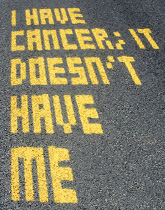Yellow paint sprays onto the alleyway while a small crowd watches. Passersby might think the group is a bunch of graffiti artists. But there are no cans of Krylon here, no brushes or stencils either. Instead, Nathan Martin (A'99) and his band of self-described "gutter technologists" look on carefully as 48 digitally controlled actuator nozzles shoot an emulsified powder in correct linear sequence. It's the first day of testing for Chalkbot, a pneumatic robot that is destined for the streets of Europe and the 96th staging of the Tour de France—if all goes well.

Bold in its stroke from a Wi Fi command, Chalkbot composes onto the Pittsburgh street large, block-style letters that spell out "Hello World" for all to see. Martin monitors the output on his laptop and checks the water-soluble medium for proper density. As he does so, he swells with pride. The CEO of the software technology firm DeepLocal, which specializes in system simplicity and usability, knows there will be days of fine tuning ahead, but he knows, too, that the hardest part is over. The 2,200-pound trailer-towed behemoth works.
Barely seven weeks earlier, Chalkbot was just an idea broached by a friend of Martin's who worked for Wieden & Kennedy, the primary ad agency of Nike. The concept: Create a message machine that would promote the return of legendary cyclist Lance Armstrong to the tour after a 3-1/2-year retirement while also marketing LIVESTRONG, the seven-time champion's cancer awareness foundation.
Martin's company, which authored Chalkbot's message-writing software, took on this challenge, teaming up with Greg Baltus (A'97) and his robot fabrication company, Standard Robot. Together, they created Chalkbot in time for the start of the world's greatest cycling event.
Capitalizing on the Nike-promoted LIVESTRONG theme It's About You—as well as the long-standing tradition of handwritten notes scrawled on the roads by the tour's spectators—messages from anywhere in the world could be sent to the LIVESTRONG Web site, where they were stored in queues and reviewed. The ones infused with inspiration, hope, and memoriam by people dealing with the effects of cancer in their lives were sent to Chalkbot and ended up being spray-painted in English or French along the 3,500-kilometer route.
All told, Chalkbot served as an effective conduit, raising public awareness about cancer treatment and research thanks to more than 100,000 painted notes that were read by the cyclists, spectators, and television viewers worldwide.

Of course, pavement isn't exactly the most common canvas for advertising or promotion. Most people typically tend to think at least eye level when it comes to putting images or messages to creative effect. Billboards. Web sites. Television. Could the Chalkbot portend a new, ground-level advertising frontier?
"I think a lot of people are bored with billboards and Web sites," suggests Martin, who is a fellow in the university's Studio for Creative Inquiry. "We've received awesome feedback about Chalkbot, so I think this machine has a great future in advertising and in cause-based campaigns like LIVESTRONG."
—Chris A. Weber



